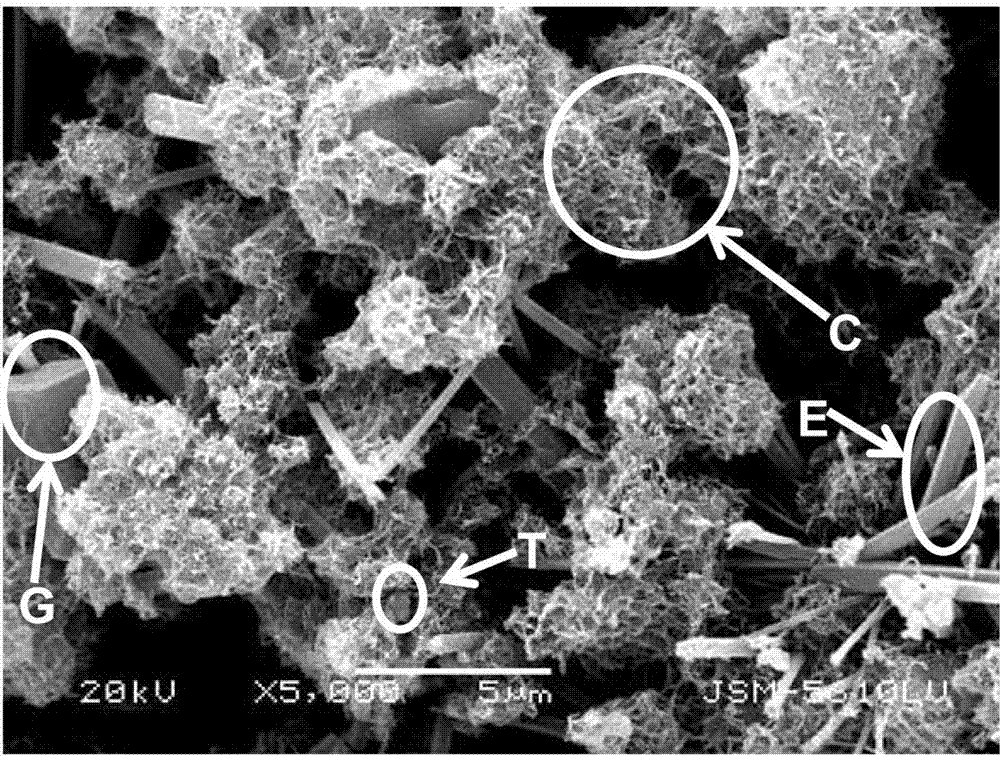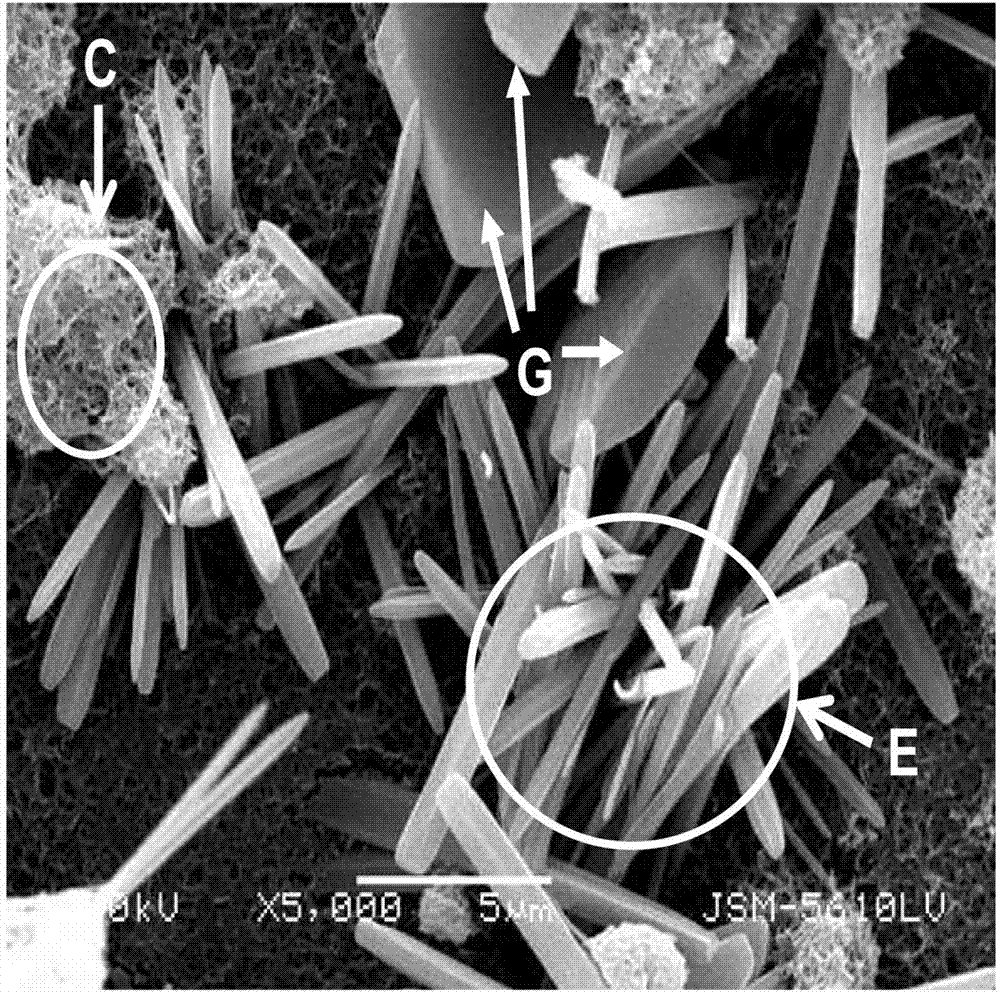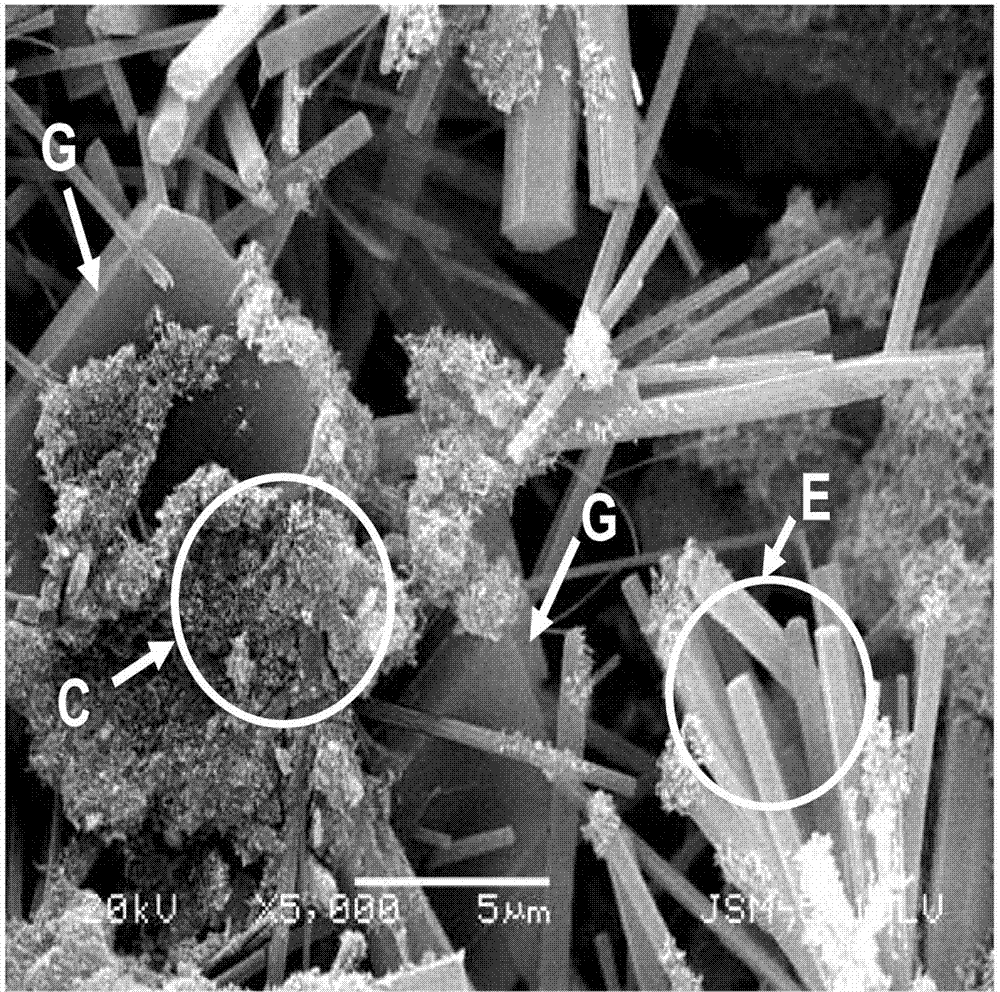Phosphogypsum-based gelling material and its application in mine tailing filling
A technology of mine tailings and phosphogypsum, which is applied in the direction of filling materials, mining equipment, safety devices, etc., can solve the problems of large cement unit consumption, high cement unit consumption, and high filling cost, and solve the problem of land occupation and utilization of ore stacking. Enhanced pathways and wide-ranging effects
- Summary
- Abstract
- Description
- Claims
- Application Information
AI Technical Summary
Problems solved by technology
Method used
Image
Examples
Embodiment 1
[0033] Use quicklime water to adjust the pH value of phosphogypsum to 6.8, dry and grind at 60°C until the specific surface area of phosphogypsum is 821.3m 2 / kg. According to the ratio in Table 1: phosphogypsum: red mud: phosphorus slag: clinker: activator to prepare phosphogypsum-based mine tailings filling cementitious material, wherein the percentages are mass percentages, based on the total mass of the cementitious material, the gelatinous Total mass of cementitious material = mass of phosphogypsum + mass of red mud + mass of phosphorus slag + mass of clinker, activator dosage = mass of activator / total mass of cementitious material, ratio of cement to mineral = total mass of cementitious material / mass of copper tailings , concentration=(cementation material mass+copper tailings mass) / (cementation material mass+copper tailings mass+water).
[0034] This experiment is copper tailings cementation experiment. Prepare the amount of copper tailings slurry and stirring capac...
Embodiment 2
[0039] Use lime water to adjust the pH value of phosphogypsum to 7.0, dry and grind at 60°C for activation, and the measured specific surface area of phosphogypsum is 831.7m 2 / kg. According to Table 2 proportioning: phosphogypsum: red mud: phosphorus slag: clinker: activator to prepare phosphogypsum-based mine tailings filling cementitious material, wherein percentages are mass percentages, based on the total mass of cementitious material, gel Total mass of cementitious material = mass of phosphogypsum + mass of red mud + mass of phosphorus slag + mass of clinker, activator dosage = mass of activator / total mass of cementitious material, ratio of cement to mineral = total mass of cementitious material / mass of iron tailings , Concentration = (mass of cementitious material+mass of iron tailings) / (mass of cementitious material+mass of iron tailings+water).
[0040] This experiment is iron tailings cementation experiment. Prepare the amount of tailings slurry and stirring capa...
Embodiment 3
[0046] Add quicklime to neutralize the phosphogypsum into neutral, dry and grind at 60°C to activate, the measured specific surface area of phosphogypsum is 842.5m 2 / kg. According to Table 3 proportioning: phosphogypsum: red mud: phosphorus slag: clinker: activator to prepare phosphogypsum-based mine tailings filling cementitious material, wherein the percentages are mass percentages, based on the total mass of the cementitious material, the gelatinous Total mass of cementitious material = mass of phosphogypsum + mass of red mud + mass of phosphorous slag + mass of clinker, amount of activator = mass of activator / total mass of cementitious material, ratio of cement to mineral = total mass of cementitious material / mass of phosphorous tailings , concentration = (mass of cementitious material + mass of phosphorus tailings) / (mass of cementitious material + mass of phosphorous tailings + water).
[0047] This experiment is a phosphorous tailings cementation experiment. Prepare...
PUM
| Property | Measurement | Unit |
|---|---|---|
| specific surface area | aaaaa | aaaaa |
| specific surface area | aaaaa | aaaaa |
| specific surface area | aaaaa | aaaaa |
Abstract
Description
Claims
Application Information
 Login to View More
Login to View More - R&D
- Intellectual Property
- Life Sciences
- Materials
- Tech Scout
- Unparalleled Data Quality
- Higher Quality Content
- 60% Fewer Hallucinations
Browse by: Latest US Patents, China's latest patents, Technical Efficacy Thesaurus, Application Domain, Technology Topic, Popular Technical Reports.
© 2025 PatSnap. All rights reserved.Legal|Privacy policy|Modern Slavery Act Transparency Statement|Sitemap|About US| Contact US: help@patsnap.com



